Others
Empowering Futures: Celebrating International Daughter's Day with the Sukanya Samriddhi Yojana
Posted On:
26 SEP 2024 1:10PM
Introduction
Daughters play a crucial role in shaping society, contributing significantly across various sectors and driving economic growth. While they deserve to be celebrated every day, International Daughter's Day, observed annually on September 22, provides a special opportunity to recognize their importance and emphasize the need for empowerment and support for girls everywhere. In India, the government has taken meaningful steps to uplift daughters through initiatives such as the Sukanya Samriddhi Account, launched by Prime Minister Narendra Modi in January 2015 as part of the Beti Bachao, Beti Padhao campaign.
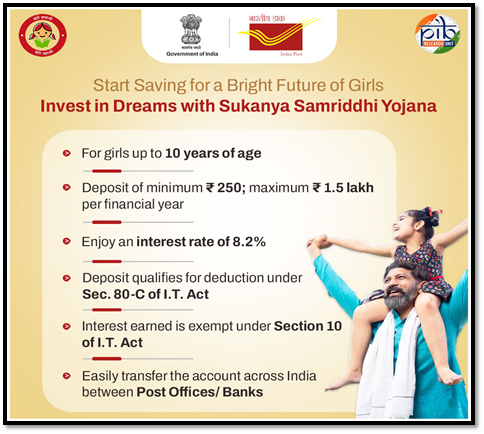
This savings scheme encourages parents to invest in their daughters’ futures, covering education and marriage expenses, with accounts accessible at any India Post office or designated commercial bank branches. These initiatives aim to ensure that girls have equal opportunities to thrive, pursue their ambitions, and become active contributors to their communities and the economy. International Daughter's Day serves as a powerful reminder of our collective responsibility to invest in the potential of every daughter, fostering a future grounded in equality and opportunity. Through programs like the Sukanya Samriddhi Yojana, India Post is concretely advancing the goals of the Beti Bachao, Beti Padhao campaign and empowering daughters across the nation.
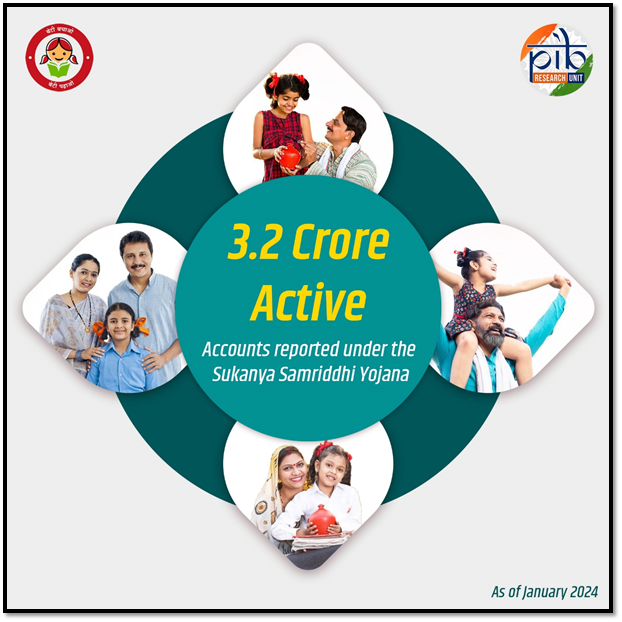
Sukanya Samriddhi Gram: Sukanya Samriddhi Yojana Makes Waves This International Daughter's Day
In many villages, Sukanya Samriddhi accounts for all eligible girls up to the age of ten have been opened, leading to the designation of these communities as complete Sukanya Samriddhi Gram. On 'International Daughter's Day' (22 September), Postmaster General of North Gujarat Region, Krishna Kumar Yadav, announced that approximately 500 villages in North Gujarat have achieved this status. In these villages, when a daughter is born, the postman promptly visits the family to assist in opening a Sukanya Samriddhi account. This proactive approach has resulted in over 4.50 lakh Sukanya accounts being established in the North Gujarat region alone, with a total of 15.22 lakh accounts across the Gujarat circle. Ongoing campaigns in schools and community meetings further connect eligible girls to this vital program, reinforcing their commitment to their future.
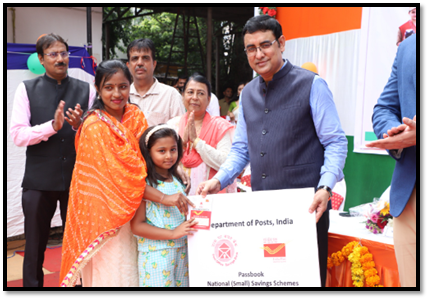
Sukanya Samriddhi Yojana
Launched by Prime Minister Narendra Modi in January 2015 as part of the 'Beti Bachao, Beti Padhao' campaign, the Sukanya Samriddhi Yojana aims to empower parents by encouraging them to save for their daughters’ futures. This scheme allows parents to open a Sukanya Samriddhi account for girls up to the age of ten at any post office or designated commercial bank branch, starting with a minimum initial deposit of ₹250, and subsequent deposits can be made in multiples of ₹50, provided that at least ₹250 is deposited in a financial year. The total annual deposit limit is capped at ₹1,50,000; any excess amount will not earn interest and will be returned. Deposits can be made for a period of up to fifteen years from the account opening date. If the minimum annual deposit is not met, the account will be classified as under default, but it can be regularized by paying a penalty of ₹50 for each year of default, along with the required minimum deposit. If not regularized, the account will still earn interest on all prior deposits until it is closed, ensuring continued financial benefits for the girl child.
- Interest Rate: Interest is calculated monthly based on the lowest balance in the account between the close of the fifth day and the end of the month. At the end of each financial year, this interest is credited to the account, with any fractional amounts rounded to the nearest rupee—amounts of fifty paisa or more are rounded up, while lesser amounts are disregarded. Notably, the interest is credited at the end of the financial year regardless of any changes in the account office due to transfers, ensuring that the financial growth for the girl child remains consistent and secure.
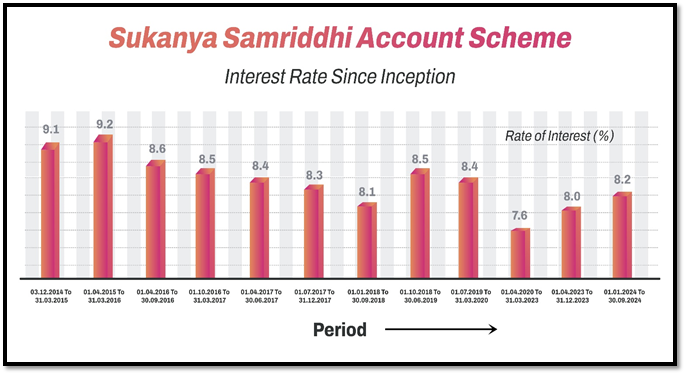
- Management of the Account: The account is managed by the guardian until the girl child reaches the age of eighteen. This allows the guardian to oversee the savings and ensure that the funds are utilized effectively for the child’s education and future needs. Upon turning eighteen, the account holder can take control of the account herself by submitting the necessary documents.
- Premature Closer of the Account: In the unfortunate event of the account holder's death, the account can be closed immediately upon submitting an application along with the death certificate issued by the competent authority. The remaining balance and accrued interest until the date of death will be paid to the guardian. Additionally, interest for the period between the account holder's death and the account's closure will be calculated at the rate applicable to Post Office Savings Accounts. Furthermore, in cases of extreme compassionate grounds—such as the account holder facing life-threatening medical issues or the death of the guardian—the accounts office may allow premature closure after thorough documentation is provided. However, it is important to note that no premature closure can occur within the first five years of opening the account. This ensures that the scheme remains a secure investment for the future while also offering flexibility in times of crisis.
- Withdrawal: An account holder can apply for a withdrawal of up to fifty percent of the balance at the end of the preceding financial year, specifically for educational purposes. This withdrawal is permissible only after the account holder turns eighteen or completes the tenth standard, whichever comes first. To initiate this process, the account holder must submit an application along with supporting documentation, such as a confirmed offer of admission or a fee-slip from the educational institution detailing the financial requirements. Withdrawals can be made either as a lump sum or in installments, with a maximum of one withdrawal per year for up to five years, always ensuring that the amount does not exceed the actual fees and charges as outlined in the admission offer or fee-slip.
- Maturity of the Account: The account matures upon the completion of twenty-one years of the account holder from its opening date. However, early closure is permitted under specific circumstances, particularly if the account holder intends to marry before reaching maturity. In such cases, the account holder must submit an application along with a declaration on non-judicial stamp paper, duly attested by a notary, and provide proof of age confirming that they will be at least eighteen years old on the marriage date. Importantly, this early closure can only occur within a one-month window prior to the intended marriage and must be completed within three months post-marriage. Upon approval, the account holder can submit an application form to receive the outstanding balance along with applicable interest, ensuring access to funds when needed.
Through this initiative, the government not only promotes savings but also reinforces the value of investing in girls’ education and empowerment.
*Application Forms
Criteria to Open an Account
- Under this scheme, a guardian can open an account in the name of a girl child who is under ten years old. The girl should be under the age of ten years as on the date of opening of the account.
- Each account holder is permitted to maintain only one account, ensuring focused savings for each child.
- To open an account, the guardian must provide the girl child’s birth certificate along with the necessary documents.
- Notably, a family can open accounts for a maximum of two girl children; however, if twins or triplets are born as the first or second children, the family can submit an affidavit and birth certificates to open additional accounts.
Other Steps Taken by Government to Uplift Girls
- Beti Bachao, Beti Padhao
Beti Bachao, Beti Padhao (BBBP) is a pivotal campaign launched by the Government of India on January 22, 2015, to raise awareness and enhance welfare services for girls. With an initial funding of ₹100 crore (approximately $14 million), the initiative focuses on critical regions such as Uttar Pradesh, Haryana, Uttarakhand, Punjab, Bihar, and Delhi, where gender disparities are pronounced. Census data indicates a troubling decline in the child gender ratio, from 927 girls per 1,000 boys in 2001 to 918 in 2011, highlighting the urgent need for action. Prime Minister Narendra Modi, addressing the issue on the International Day of the Girl Child - October 11, called for the eradication of female foeticide and sought public suggestions through the MyGov.in portal. The BBBP scheme, collaboratively administered by the Ministries of Women and Child Development, Health and Family Welfare, and Human Resource Development, targets low child-sex ratio districts through multi-sector efforts. The campaign gained significant traction with the #SelfieWithDaughter movement, inspired by sarpanch Sunil Jaglan, which celebrated daughters and fostered a cultural shift.
- Scheme for Adolescent Girls (SAG)
The Scheme for Adolescent Girls (SAG) is a vital initiative aimed at addressing the nutritional and health needs of adolescent girls aged 14 to 18 years, particularly in the Northeast Region and Aspirational Districts(most under-developed districts) across India.
SAG Scheme has been subsumed under Saksham Anganwadi & Poshan 2.0. The scheme has been approved by the Government of India for implementation during the 15th Finance Commission period 2021-22 to 2025-26. Saksham Anganwadi and Poshan 2.0 is an Integrated Nutrition Support Programme
This scheme takes a life cycle approach to combat inter-generational malnutrition by providing essential nutritional support and various health services, including IFA(Iron and folic acid)supplementation, health check-ups, and nutrition and health education. Recognizing the need for skill development, the program also offers life skills training to empower girls and enhance their access to public services. Initially targeting out-of-school girls aged 11-14, the scheme was revised to align with the Right to Education Act, which ensures that this younger group receives compulsory education and mid-day meals in schools. Consequently, SAG has evolved to focus on older adolescent girls, ensuring they receive the necessary support to improve their health and nutritional status. This comprehensive approach aims to uplift the health and education of adolescent girls, paving the way for a brighter future.
- Scheme for Promotion of Menstrual Hygiene among Adolescent Girls in Rural India
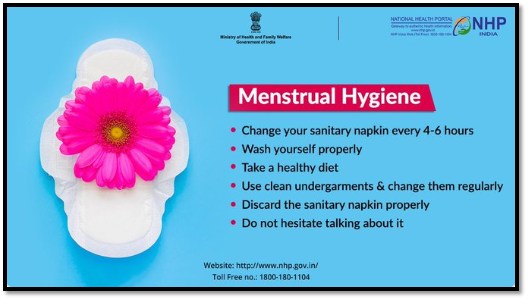
The Scheme for Promotion of Menstrual Hygiene among Adolescent Girls in Rural India, initiated by the Ministry of Health & Family Welfare, focuses on enhancing menstrual hygiene practices for girls aged 10-19 in rural areas, as part of a broader approach to Adolescent Reproductive Sexual Health since 2011.
With the participation of over 3,13,255 Anganwadis and 3,69,461 schools, the scheme aims to educate and empower young women regarding menstrual hygiene. ASHA workers play a crucial role in this initiative by distributing sanitary napkin packs at a subsidized rate of ₹6 for six napkins and conducting monthly meetings to discuss health issues, including menstrual hygiene management. Additionally, under the Pradhan Mantri Bhartiya Janaushadhi Pariyojana (PMBJP), the government offers Jan Aushadhi Suvidha Sanitary Napkins for just ₹1 per pad, ensuring accessible and affordable menstrual health services. The cumulative sales of Suvidha Napkins as on June 30, 2024 is 57.00 crores.
- UDAAN: A Program to give wings to girl students
Udaan is an innovative project launched in 2014 by the Central Board of Secondary Education (CBSE) under the guidance of the Ministry of Human Resource Development (MHRD), aimed at addressing the low enrollment of girl students in prestigious engineering institutions and bridging the gap between school education and engineering entrance examinations. This initiative empowers girls by providing them with essential resources to pursue their aspirations in engineering and contribute to the nation's development. Under the program, students in Classes XI and XII receive free access to a variety of offline and online resources, including tutorials, videos, and study materials. Udaan features virtual contact classes at 60 designated city centers and offers pre-loaded tablets to facilitate learning beyond the classroom. Additionally, students benefit from orientation sessions on technology use, tailored assessments for constructive feedback, remedial support, peer learning opportunities, and motivational sessions for both students and parents. A dedicated student helpline provides assistance in clarifying doubts and monitoring progress, ensuring that each participant receives the support they need to succeed in their engineering entrance preparations.
- National Scheme of Incentives to Girls for Secondary Education
The National Scheme of Incentive to Girls for Secondary Education (NSIGSE), launched in May 2008, aims to enhance educational opportunities for girls, particularly those from Scheduled Caste (SC) and Scheduled Tribe (ST) communities. Now integrated into the National Scholarship Portal (NSP), the scheme focuses on promoting enrolment and minimizing dropout rates among these girls, ensuring they remain in school until at least 18 years of age. It provides financial incentives by depositing ₹3,000 in a fixed deposit account for eligible unmarried girls upon their enrollment in class IX after successfully passing class VIII. This initiative targets all girls from SC/ST backgrounds and those from Kasturba Gandhi Balika Vidyalayas, regardless of caste, who enroll in government-supported secondary schools. By addressing economic barriers and fostering an enabling environment, the scheme seeks to empower girls through education, ultimately contributing to their long-term personal and professional development.
The NSIGSE is now integrated into the National Scholarship Portal (NSP), developed by the Ministry of Electronics and Information Technology (MeitY). This portal aims to streamline and expedite the disbursement of scholarships across various ministries and departments, ensuring efficiency, transparency, and reliability in the process.
Conclusion
September 22 serves as a vital reminder to celebrate the contributions of girls and advocate for their empowerment. In India, numerous initiatives launched by the Government of India exemplify significant efforts to uplift daughters and enhance their opportunities for growth and development. These programs not only recognize the value of girls in society but also aim to create a supportive environment that fosters their potential.
References:
https://www.india.gov.in/sukanya-samriddhi-yojna
https://pib.gov.in/PressReleasePage.aspx?PRID=2057603
https://smallsavings.assam.gov.in/portlets/take-care-with-sukanya-samriddhi-account
nsiindia.gov.in/(S(ymk5jvjxb3mbrw45izhm332z))/InternalPage.aspx?Id_Pk=171
https://pib.gov.in/PressReleaseIframePage.aspx?PRID=1990745
https://wcd.gov.in/
https://janaushadhi.gov.in/pmjy.aspx
https://www.pib.gov.in/PressReleasePage.aspx?PRID=2001822#:~:text=Under%20Pradhan%20Mantri%20Bhartiya%20Janaushadhi,health%20services%20at%20affordable%20prices.
https://www.education.gov.in/incentives
https://www.india.gov.in/spotlight/udaan-program-give-wings-girl-students
https://dsel.education.gov.in/nsigse
Kindly find the pdf file
***
Santosh Kumar/ Ritu Kataria/ Ishita Biswas
(Backgrounder ID: 153206)
आगंतुक पटल : 4854
Provide suggestions / comments